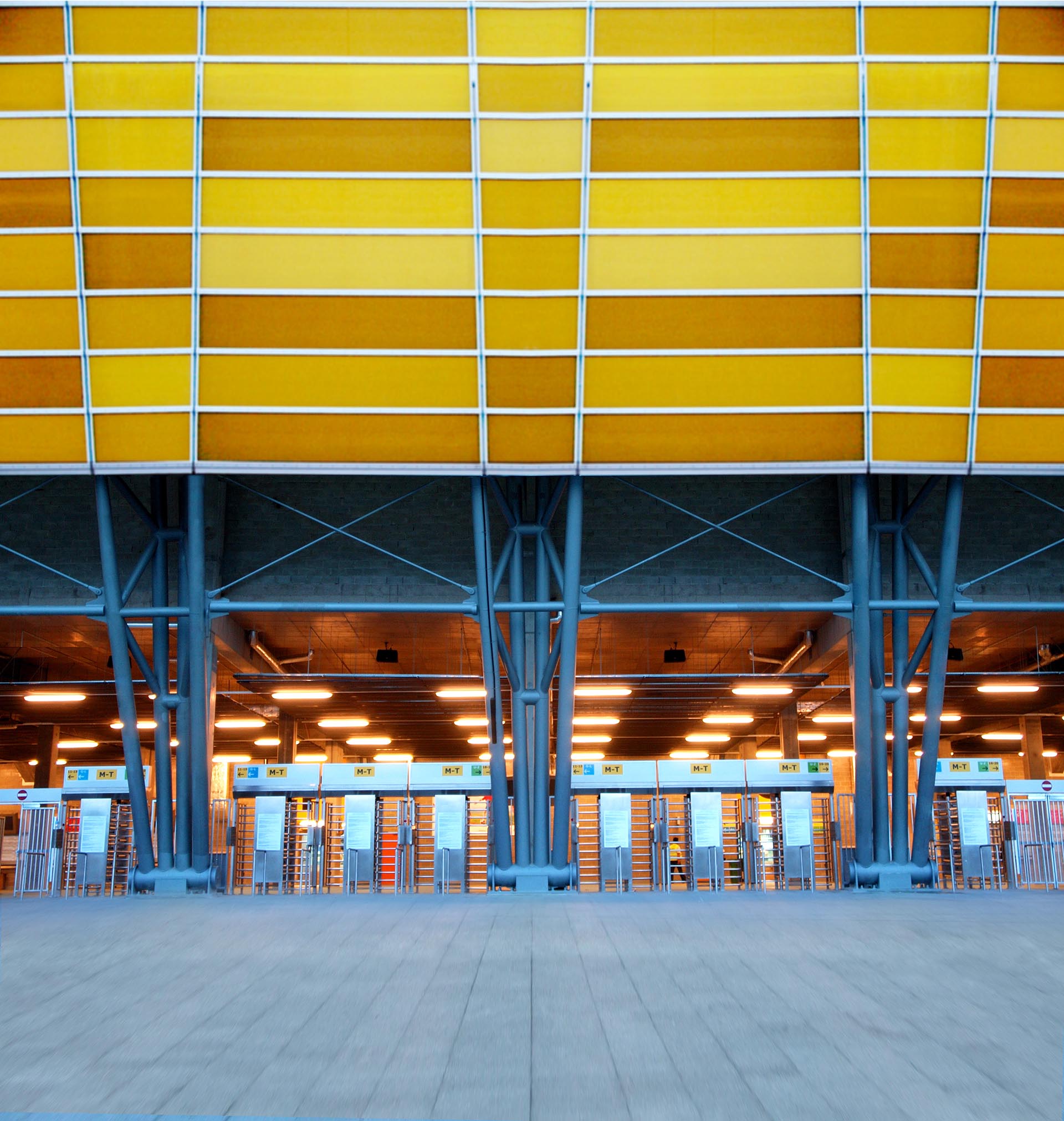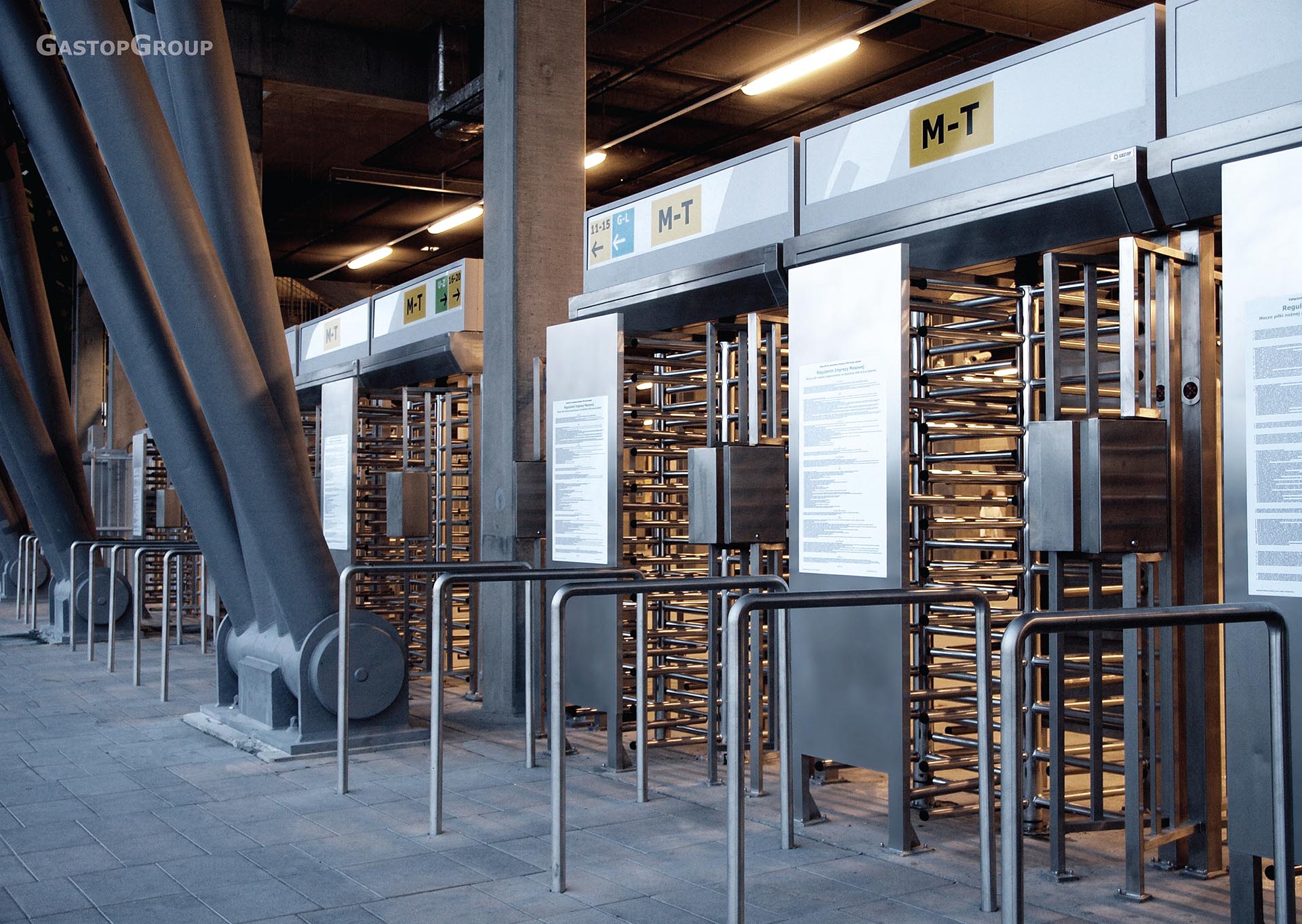UEFA REQUIREMENTS – FACILITY INFRASTRUCTURE
The infrastructure of stadiums, where sport events organised by the Union of European Football Associations (UEFA) are to take place must meet the requirements of the organisation. Such requirements are issued individually for each event. Requirements for EURO 2016 have been published in the document: “Stadium Requirements – UEFA EURO 2016.
The document regulates many issues related to the infrastructure of spectator facilities.This article will present exclusively the issues related to traffic control and pedestrian entry to the stadium, which includes turnstiles, fences, entrances for the disabled, fences, and lead barriers. In respect of issues not regulated in it, the document refers to construction regulations and safety standards applicable in the country where the event is to take place.
Stadium capacity in the document is specified by such factors as maximum agreed capacity and time needed for filling and emptying the stadium.Such parameters must be approved by local authorities.
Safe stadium capacity shall mean capacity expressed by fan number. In order to define safe capacity of the stadium, the smaller number of the following is to be adopted, namely: the number of seats for fans at the audience, or the number of fans to safely pass through the entrance or exit gates, or escape doors in the allocated time.
The allocated time shall differ for each facility, including depending on the fire safety degree and method. Practice shows that in order for all fans to reach the safety point, maximum time of 8 minutes must be adopted.
In order to determine safe stadium capacity, also account for the number of turnstiles constituting single pedestrian gates, and turnstile capacity rate not greater than 660 people per hour. Safe capacity calculated this way must also be approved by local authorities and disclosed in the “SAFETY CERTIFICATE”. The document defines the terms of internal and external zones. External zone is an area around the stadium which serves for first ticket control. The external zone must be separated from internal zones with
a fencing with the height of at least 2.4 m. In the external zone, fans undergo first verification before passing through the access control system and turnstiles. Further control takes place while passing through turnstiles that form the entrance to the internal protected zone. Such controls are necessary to prevent entry of unauthorised persons.
It is necessary to apply pedestrian traffic ordering systems (lead barriers) to avoid excess crowding and to assure safe access to turnstiles.In order to assure the appropriate number of turnstiles and to allow entry to the stadium for all fans within one hour, adopt the capacity of 500-650 persons at each turnstile.
The external zone must be further away from the stadium in order to allow for unobstructed execution of activities by the forces after the fans have passed through the external zone and entered the protected zone.
In order to appropriately manage the filling process, apart from turnstiles, each stadium must be equipped with an electronic ticket system.This requirement refers to all gates between the external zone and the protected zone. The system must be flexible and allow for connecting additional turnstiles, turnstiles for the disabled, with readers, as well as manual devices for ticket verification.
Stadium owner must assure communication between access control system and UEFA software via the web, in particular as regards current reports and information on authorisation and filling of the stadium.



